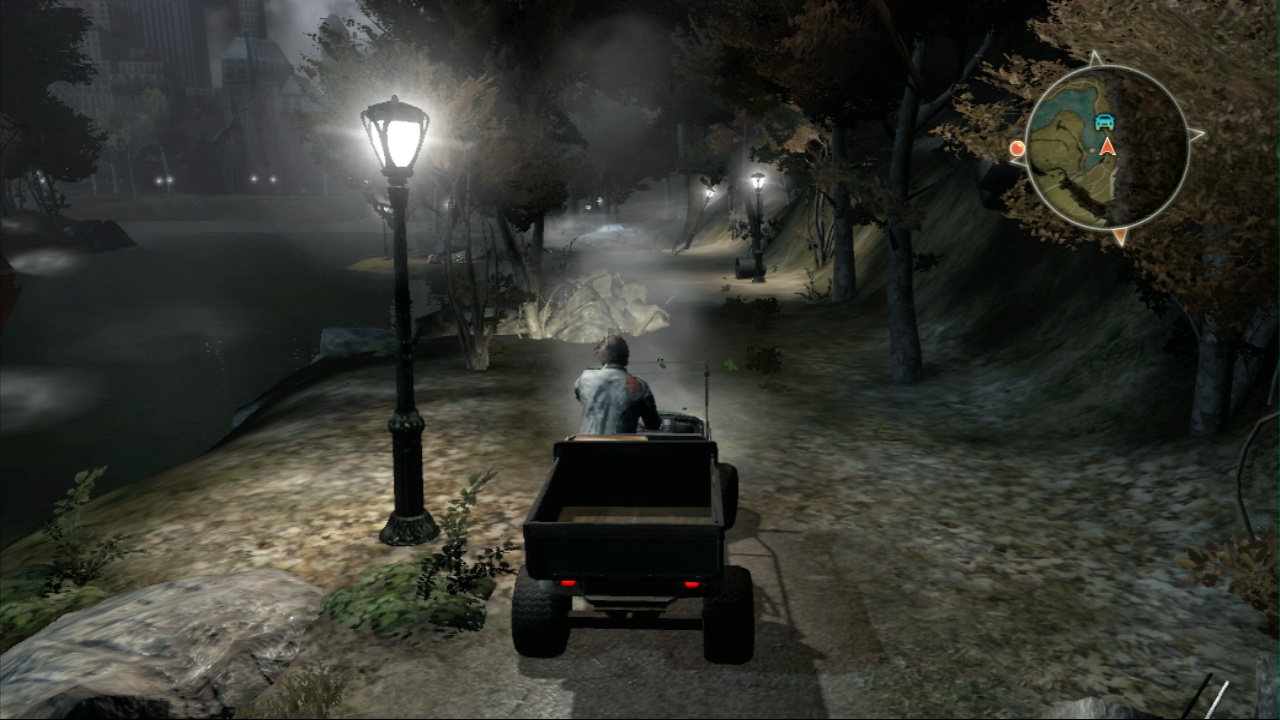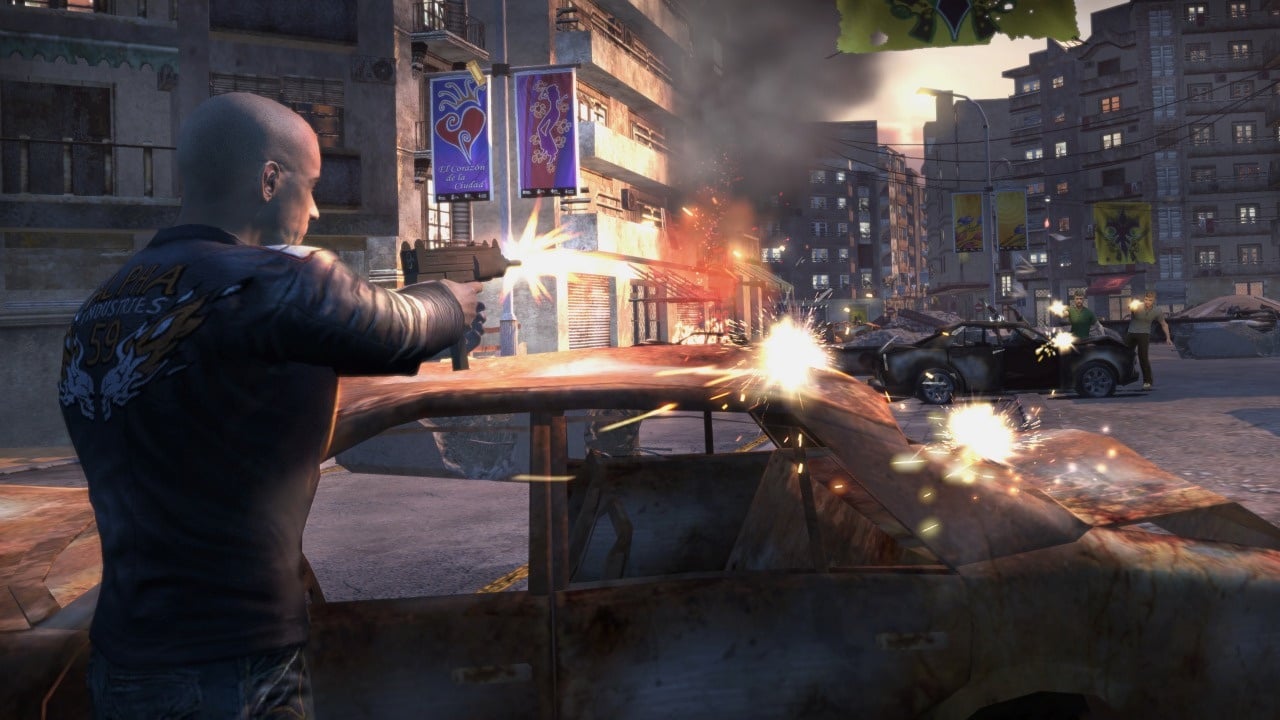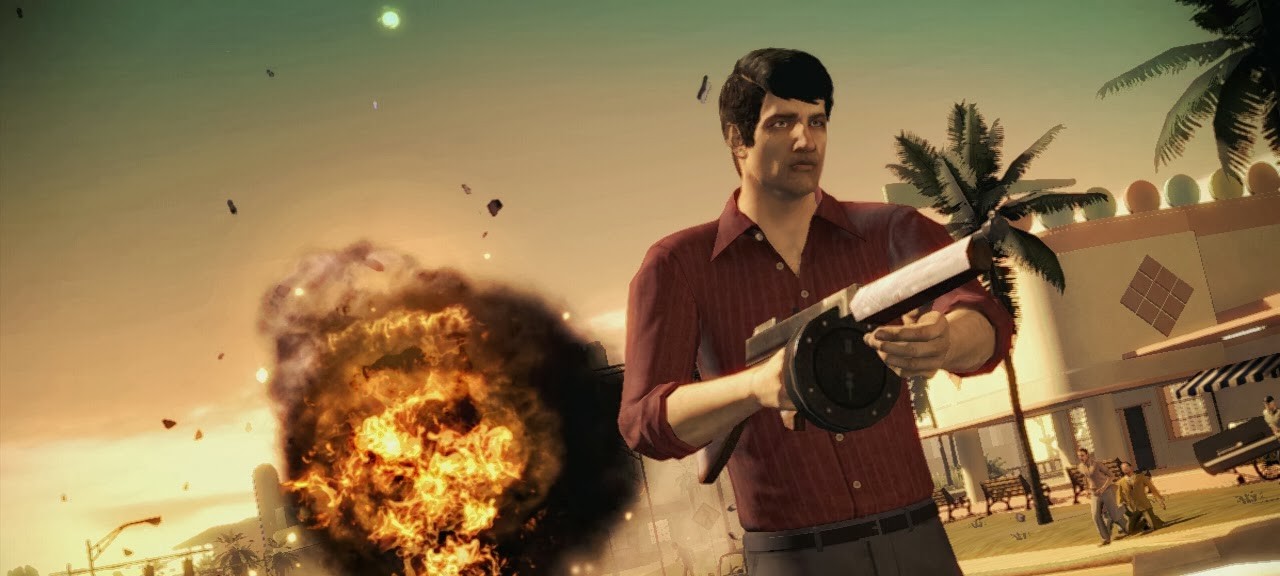Not every open-world game can be a Fallout or Grand Theft Auto. After all, these games capture the general interest in ways that few other games can, selling several million copies apiece. But the immense popularity of these two gaming juggernauts does not mean they are the only examples of open-world games to exist. Indeed, many games have tried their hands at succeeding in the genre and more and more traditionally linear games have begun adopting the open-world model into their designs (see our review of Metal Gear Solid V: The Phantom Pain). In light of this recent trend toward and immense growth of the open-world game, let us look back at four forgotten open-world games of the last generation.
[divider]Alone in the Dark[/divider]
First released for Microsoft Windows, the Xbox 360, and Wii in June 2008, Alone in the Dark is the fifth installment of Atari’s survival horror game series of the same name. It follows paranormal investigator Edward Carnby as demonic forces begin tearing New York City apart in search of a mysterious and very powerful magic stone. Very early on in the game, Edward meets an art dealer by the name of Sarah Flores and the two seek refuge in New York’s Central Park as they move to determine the origins of the stone and prevent the apocalypse it has triggered. A PlayStation3 rerelease titled Alone in the Dark: Inferno was released later in 2008, containing several enhancements from the previous versions, including such things as better camera controls and a refined inventory system. Why should it be remembered?
Why should it be remembered?
It was an episodic, open-world survival horror game set in the entirely unique environment of Central Park. Although to clarify, it was not episodic in the way most gamers who are now familiar with such games as Telltale’s The Walking Dead series might imagine an episodic game to be. The entire game shipped all at once and on a single disc—what made it episodic was the manner in which it presented itself, which is to say the game was divided up into television-style “episodes” that could played in any order. A “previously on…” segment recollects the events of the previous chapters and is used to bridge each “episode.” With regards to its setting, Central Park not only provided players an expansive playspace to explore but it also worked to enhance the game’s horror elements by subtly twisting a very well-known location, thereby heightening player unease. Parks are after all most associated with recreation and being together with friends and family—corrupting one into something sinister is very powerful psychologically, at least in theory. Why is it best left forgotten?
Why is it best left forgotten?
Unfortunately, the game was a confused mixture of gameplay elements that never really came together as well as they might have. For one, Alone in the Dark tried to be an intimate horror game with ammo and health conversation while also attempting to be a bombastic action thriller with over-the-top set pieces. It was also plagued by boring enemy design, weak combat (which utilized an interchangeable first and third person camera), and poor physics-based puzzles. Its story was also something of a jumbled mess with some truly laughable dialogue to boot. I’m sure “I’m the fucking universe” sounded cool paper but when you hear it spoken… actually, it does sound kind of awesome now that I think about it. All told, if you can find Alone in the Dark at your nearest bargain bin clearance sale there are enough interesting moments in the game for a weekend’s worth of fun. Give this one a try. [divider]The Godfather II[/divider]
[divider]The Godfather II[/divider]
Sequel to the 2006 surprise hit The Godfather, The Godfather II was released in 2009 for the Xbox 360, PlayStation 3, and Microsoft Windows. Like its predecessor, it loosely follows the events of its namesake film through the eyes of an all-original character. The story of this player-controlled character intersects with the narrative of the film on several occasions, presenting fans of Coppola’s crime epic with a fresh take on the life and times of the Corleone family. Why should it be remembered?
Why should it be remembered?
It was an open world action-adventure game based on a hugely popular and influential crime film—THE crime film in many ways. Open world crime games such as Grand Theft Auto and Saints Row owe much debt to The Godfather trilogy in terms of inspiration so it would have been a true shame if the franchise had never tried to make it big in the world of videogames. Developer Electronic Arts understood this and so it set out to make an ambitious game that spanned not one or two open world environments, but three large cities (New York City, Miami, and Havana). It also introduced us to the “Don’s View,” which allowed players to organize their crime syndicates from a top-down perspective similar to a Real-Time-Strategy game, adding a layer of management complexity missing from other open world titles. Why is it best left forgotten?
Why is it best left forgotten?
Dated visuals even at release, repetitive mission design, and numerous technical issues bog this game down in mediocrity. One of the key aspects of The Godfather II is its “extortion” system which allows players to intimidate small business owners into paying protection money to the Corleone family. Other rival families can and frequently will attempt to strong-arm these businesses away from your care, forcing players to fight for territory they may have secured only moments before. Thankfully, the act of shooting enemies is itself quite fun but only if you don’t mind brain-dead enemy AI that never presents a real challenge. But perhaps the most heinous crime commited by The Godfather II is how fast and loose it plays with the film’s plot. Where its predecessor attempted to stay as faithful as possible to its parent film, The Godfather II makes frequent changes to the order of certain events and even places the player character of Dominic into certain scenes in which he was not present in the film. As with Alone in the Dark, if you can find The Godfather II for cheap and are a fan of the movie license then it may be worth a playthrough. Otherwise, this is one offer you can definitely refuse. [divider]The Saboteur[/divider]
[divider]The Saboteur[/divider]
Released for Microsoft Windows, the Xbox 360, and PlayStation 3 in December 2009, The Saboteur was developer Pandemic Studios’ final game. The esteemed developer had previously worked on such games as Full Spectrum Warrior, Star Wars: Battlefront I and II, and the Destroy All Humans! series. Set in 1940s Paris the game follows Irish racecar driver Sean Devlin as he is recruited by French Resistance fighters in a quest to assassinate a murderous Nazi colonel (aren’t they all?). The game caused a minor controversy at release for its “Midnight Show” downloadable content pack which allowed players to toggle a nudity switch off and on for all of its female brothel girls (hint: there were a lot). Why should it be remembered?
Why should it be remembered?
It was an open world action-adventure game set in Vichy France from a well-respected development team. World War II has never really been explored in an open world style game; instead it has primarily served as a backdrop for a whole slew of linear first and third-person shooters. One unique thing about The Saboteur was its use of color (or lack thereof) to denote how strong or active enemy forces were in any given section of its large open world. Areas under strict German control were devoid of all color (save for some splashes of Nazi red), its occupants weary and downtrodden. As they are liberated color returns to the people, their homes and markets. Fighting enemy soldiers and making one’s way through France in period-specific vehicles was also quite fun, providing players with a variety of ways to tackle any given mission. Stealthy or loud, the game was a true sandbox of open world design. Why is it best left forgotten?
Why is it best left forgotten?
2008-2009 was absolutely awash with open world games, including not only those listed here but full of such titles as Saints Row 2, [PROTOYPE], Grand Theft Auto IV, and Pandemic’s own Mercenaries 2: World in Flames. As such, The Saboteur was lacking in original ideas and instead relied on lifting successful ones from its many contemporaries, including an Assassin’s Creed-style parkour system, except with worse animations. It was also rather unpolished in spots with missions that failed to start and enemy AI that could spot you from a mile away. “The Midnight Show” was also a tad chauvinistic with its nudity (no one thinks any less of you if you bought it). Of course, it’s a shame that Pandemic Studios was shut down so close to the game’s release. The industry today is truly a little less colorful as a result. I say if you’re looking to revisit Pandemic’s portfolio, The Saboteur isn’t all bad. Consider playing it. [divider]Wheelman[/divider]
[divider]Wheelman[/divider]
Released for the PlayStation 3, Xbox 360, and Microsoft Windows in March 2009, Wheelman was developer Tigon Studios’ second game following their 2004 smash-hit, The Chronicles of Riddick: Escape from Butcher Bay. The game follows undercover CIA agent Milo Burik as he infiltrates three of Barcelona’s biggest gangs in order to prevent an arms deal from destabilizing the region. Acting as a wheelman, or driver, for each of the gangs Milo is drawn into a bloody conflict overflowing with high-speed chases and narrow escapes. Why should it be remembered?
Why should it be remembered?
It was an open world racing game with an emphasis on vehicular combat starring American actor Vin Diesel, founder of Tigon Studios. Digitized actors are far and few between, so it’s always interesting to see what projects they attach themselves to. In the case of Wheelman, Vin Diesel had planned a film adaptation of the game in collaboration with Paramount Pictures, MTV Films, and his own video production company, One Race Films. Wheelman was also set in Barcelona, Spain and featured such real-world landmarks as the Sagrada Familia church and the Casa Battlló, among many others. Car combat was modelled after action movie chase scenes (such as Diesel’s own Fast and Furious franchise) and implemented an easy-to-use “ramming” mechanic that was controlled by the right analog stick. Players could slam their cars into enemy vehicles from any direction and cause all manner of fiery wrecks. Why is it best left forgotten?
Why is it best left forgotten?
Ugly visuals, sketchy car handling, and dubious Spanish accents kept this game from being something great. But it was more than that, as Wheelman was actually pretty fun. What really hurt it was its go-nowhere story, poor on-foot level design, and a lifeless open world. Where the game’s vehicular combat was an arcadey mix of Burnout-meets-Grand Theft Auto, its slower paced on-foot segments were little more than a poor-man’s Gears of War. And while Barcelona was a novel setting for the game there was nothing interesting to do or see outside of its 31 story missions. Pedestrians had no interesting AI patterns to follow and they featured none of the incidental dialogue clips that breathe life into better open world games. Still, there’s something undeniably alluring about a game where you can drive Vin Diesel straight into oncoming traffic at high speeds and see his lifeless body ragdoll 30ft into the air. You’re not going to get that in The Witcher 3, and that’s a promise. If you can find Wheelman for cheap (I bought it at my local GameStop for under a dollar) and are in need of an arcade racer then you may want to give it a go. [divider]Gone but not so forgotten after all?[/divider]
[divider]Gone but not so forgotten after all?[/divider]
Creating an open world game represents a huge investment for developers today. The rising costs of development and some stiff competition means that an open world game needs to stand out from the pack in order to be successful. Often times this means revisiting older titles and taking inspiration from what worked and learning from what didn’t. In this sense it might be possible to see where these forgotten games have left their mark: Alone in the Dark’s horror-tinged open world sandbox is just now being experimented with by such games as The Forest and the recently announced PAMELA; The Godfather II’s RTS elements are (hopefully) being refined in the upcoming Triad Wars; The Saboteur’s (and its cousin game Mercenaries) light-hearted military action lives on in games like the forthcoming Just Cause 3, and Wheelman’s car combat was already used to great effect in 2012’s Sleeping Dogs. So while these games may not be the hottest thing currently available they still live on in the DNA of more open world games (and in the “Used” sections of hundreds of game stores around the world).



